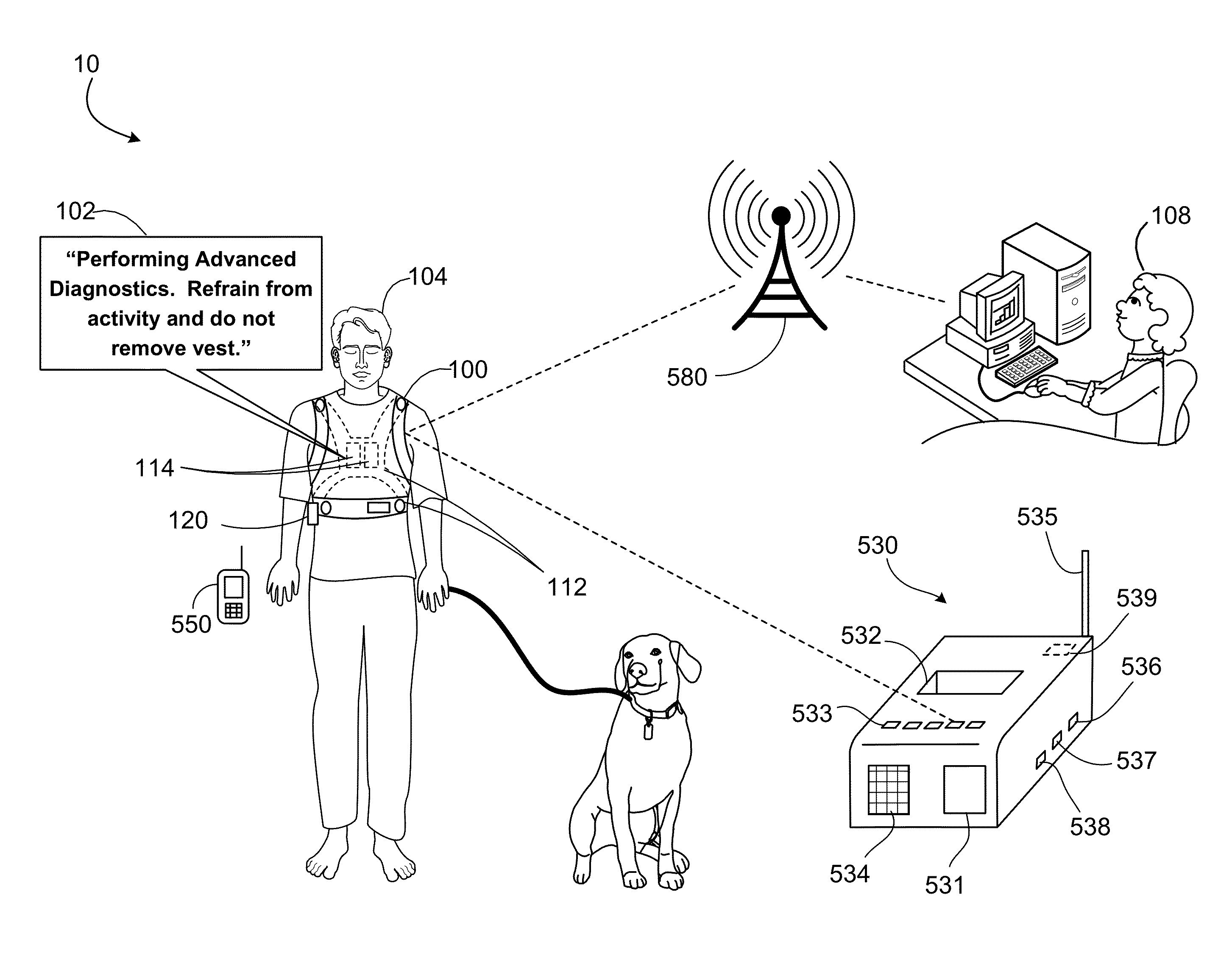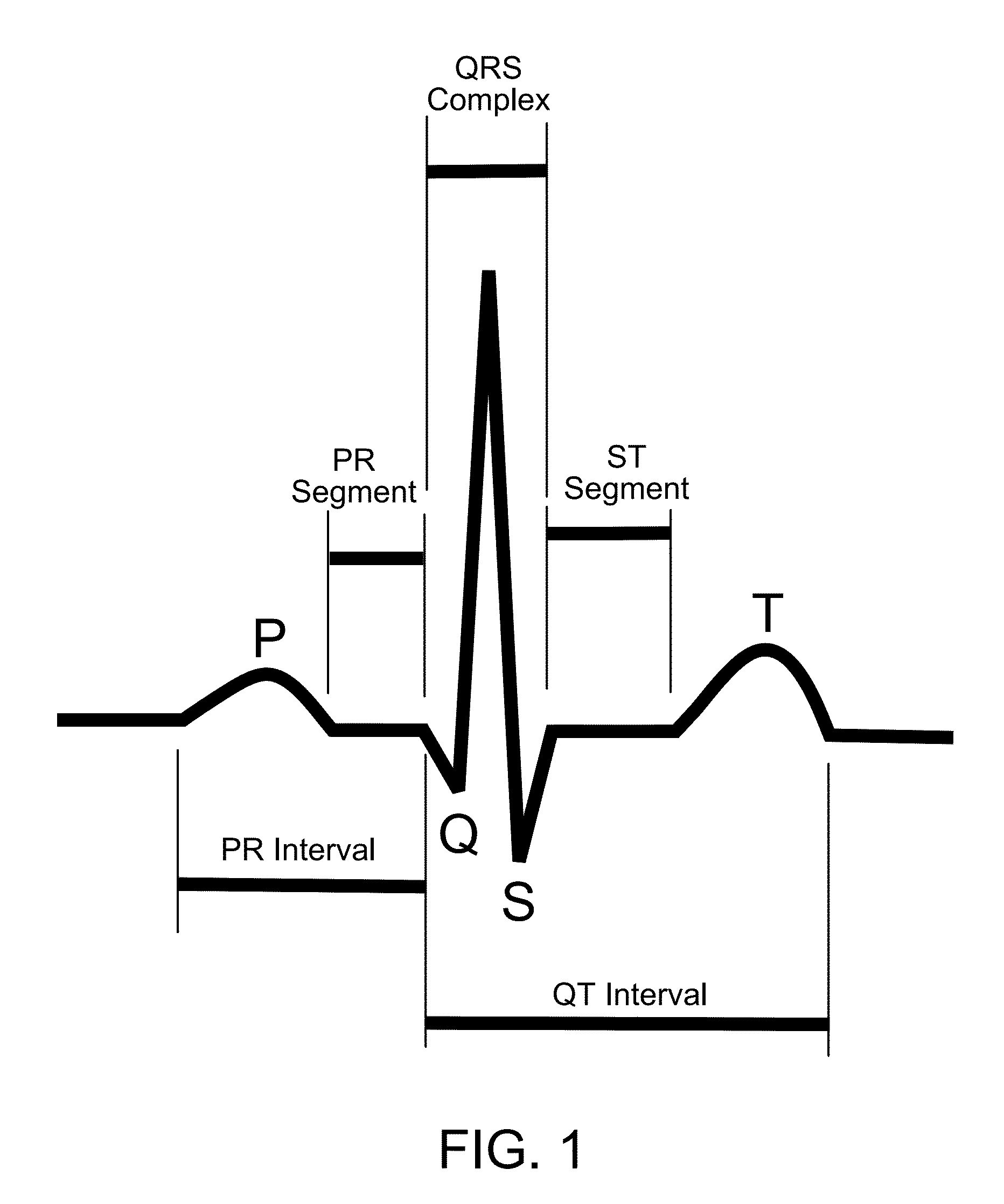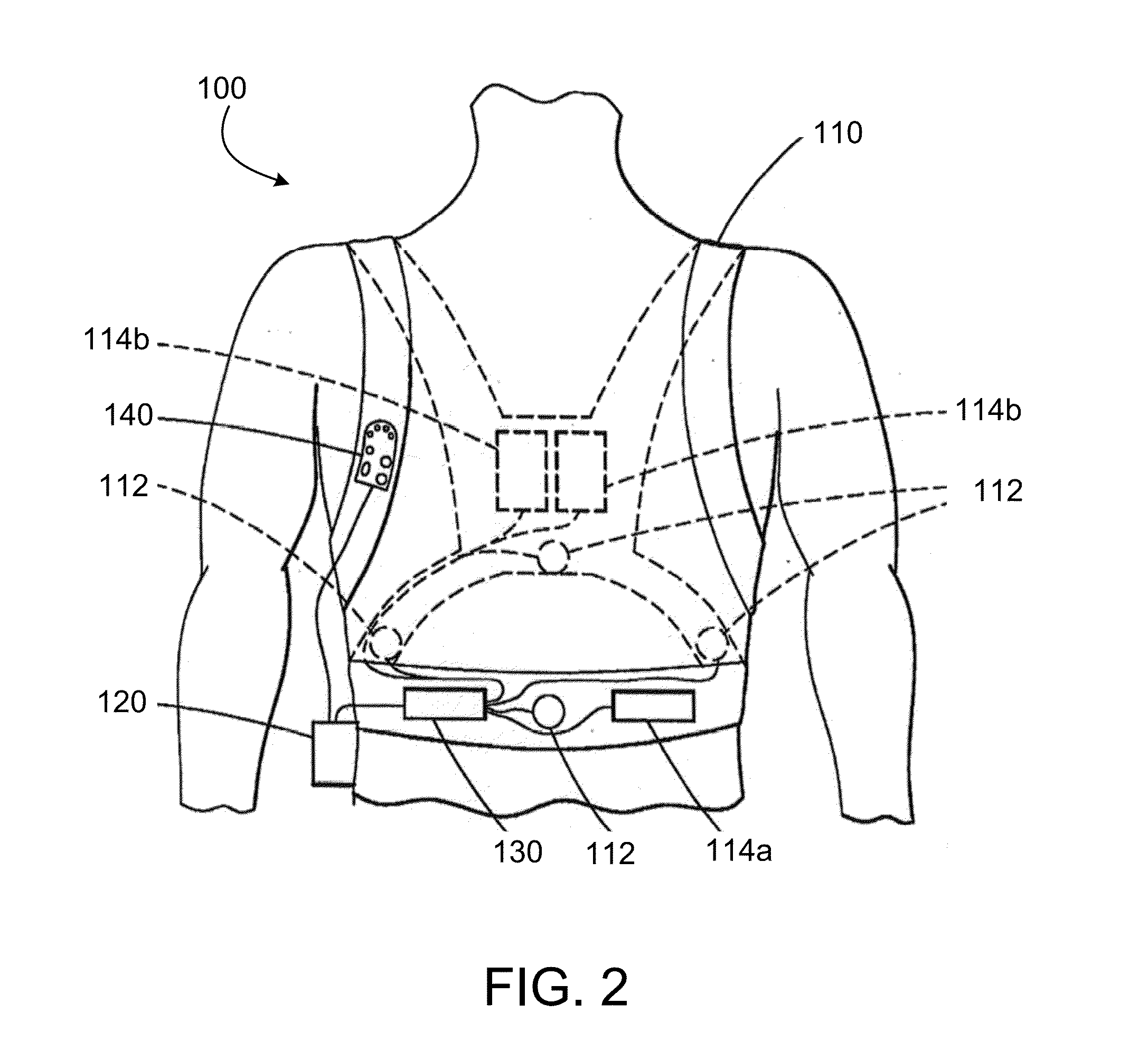Medical Premonitory Event Estimation
a premonitory event and event estimation technology, applied in the field of medical premonitory event estimation and detection systems and methods, can solve the problems of lack of recognition of early warning signs prior to the onset of sudden cardiac death in patients at risk, and achieve the effect of improving the detection accuracy and accuracy of premonitory events
- Summary
- Abstract
- Description
- Claims
- Application Information
AI Technical Summary
Benefits of technology
Problems solved by technology
Method used
Image
Examples
Embodiment Construction
[0215]Provided herein are improved systems and methods for automatically analyzing subject data to predict conditions including medical events, for example, adverse cardiac events, that may occur for a subject. One or more event estimation of risk scores can be generated that are based on an anticipated time of occurrence of the event. For example, for a plurality of time periods, an event estimation of risk score can be calculated (e.g., such that each time period has its own respective event estimation of risk score). In this way, multiple different event estimation of risk scores can be calculated for multiple different time periods, (e.g., less than about ten minutes, less than about one hour, less than about three hours, less than about one day, less than about one week, and / or less than about one month, etc.). The event estimation of risk scores provide a measure of the likelihood or probability of one or more medical event(s) occurring within the associated time period.
[0216]...
PUM
 Login to View More
Login to View More Abstract
Description
Claims
Application Information
 Login to View More
Login to View More - R&D
- Intellectual Property
- Life Sciences
- Materials
- Tech Scout
- Unparalleled Data Quality
- Higher Quality Content
- 60% Fewer Hallucinations
Browse by: Latest US Patents, China's latest patents, Technical Efficacy Thesaurus, Application Domain, Technology Topic, Popular Technical Reports.
© 2025 PatSnap. All rights reserved.Legal|Privacy policy|Modern Slavery Act Transparency Statement|Sitemap|About US| Contact US: help@patsnap.com



